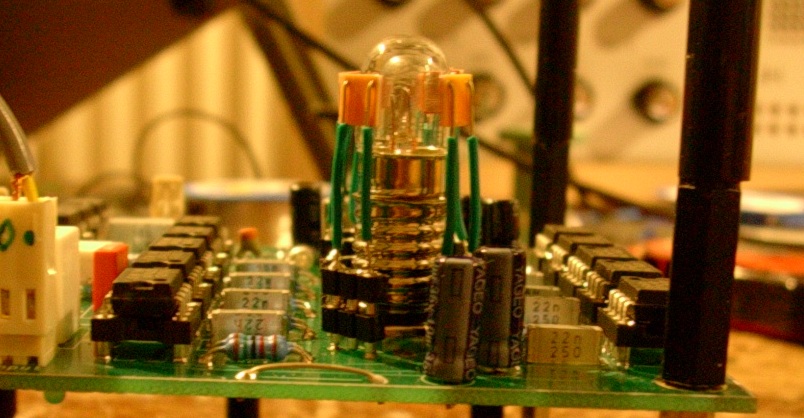
JH. Krautrock Phaser
(a. k. a. "Compact Clone" - insprired
by the Schulte Compact A Phasing)

Background
If you listen
to German records from the 1970's, you often hear a rather unique
phasing that comes from a device called "Compact A Phaser" from the
Berlin company "Gert Schulte Audio Elektronik". It's often referred to
as "Schulte Phaser", and I have heard it being called "Krautrock
Phaser", "Schulze Phaser" (because it's prominent on many early KS
albums), "TD Phaser" (because of Tangerine Dream). In my opinion, this
phaser has been important to the sound of these early electronic
musicians almost as much as the synthesizers the used.
In 1999 I have
built a clone of this on veroboard, and put it into the enclosure you
can see in the pictures below.
This has been partially sponsored by the vintage synthesizer shop
Touched by Sound back then, who also have taken my Phaser to NAMM to
test the waters for commercial production. Well, it didn't come to this
for various reasons, but I've been enjoying my Compact Clone ever
since, and mostly use it on my Korg Lambda string ensemble.
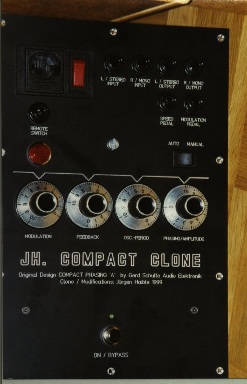 |
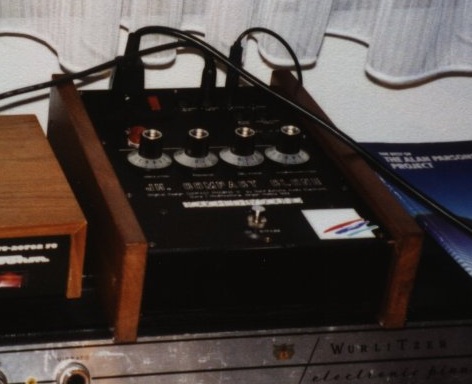 |
| Front panel
view (click on image to enlarge) |
With wooden
cheeks (click on image for greater picture) |
| Things
I keep |
| The incandescent lamp / LDR
combination that is responsible for the unique way of sweeping |
| Big incandescent lamp as sweep
indicator on front panel |
| The circuit topology: 8 Stages
of Phasing, 2 Stages of Feedback. Negative, lowpass-filtered feedback |
| The 741 opamps |
| The unique "Osc. Period"
potentiometer that has maximum LFO rate on ccw end. (optional) |
| Works with original 7V 100mA
lamps. |
| The possibility to mount
potentiometers direcly on board. (Alps RK11 vertical mount types or
similar.) Of course you can connect about every other potentiometer with wires, too. |
| Mains-Powered (optional). For
+/-15V powered, see below. |
| Power supply for mains powering on the PCB, including secondary fuses, rectifiers, electrolytic caps, voltage regulators and heatsinks. |
| Things
I change |
| It's possible to adapt the circuit to slightly different lamps and LDRs. |
| I've added a lot of coupling
capacitors to keep offset voltages from the outputs |
| A Hard-Bypass with a relay that
is controlled by an momentary switch. (Push: Turn on. Push again: Turn
off.) Several of these switches can be wired in parallel, i.e you can have on on the front panel, and another one connected via jack for remote control. |
| Circuit redesigned for easily
available potentiometers: 50k lin and 50k log (47k is the
same, actually.) It's also possible to adapt it for slightly different pot values (feel free to ask), if your favorite form factor of potentiometer only comes in certain values. |
| You don't need that special
"staircase" enclosure when using pcb-mounted potentiometers. In my
version, the pots are mounted on the solder side of the board. So the
component side looks down
inside the enclosure, not being in th eway of the front (or rather
"top") panel. |
| Complete redesign for +/-15V
operation. Option for MOTM-style power connector on the PCB. |
| Large heatsinks and stronger
Lamp Driver transistors. |
| Mains transformer and primary
fuse not on PCB for safety
reasons. |
| No DIN jack. Switch for LFO / Manual sweep on front panel 1/4" TRS jacks for remote control of Sweep Rate and Modulation Depth. |
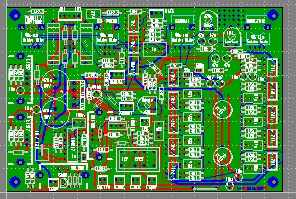
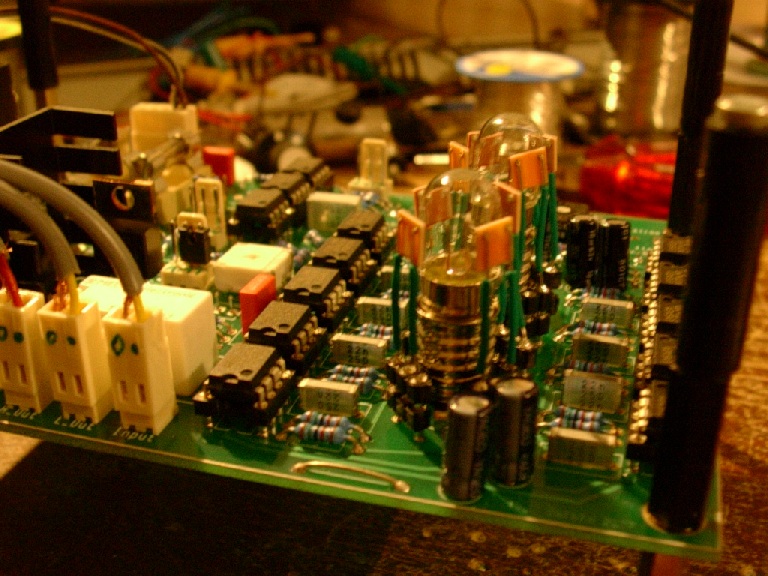 |
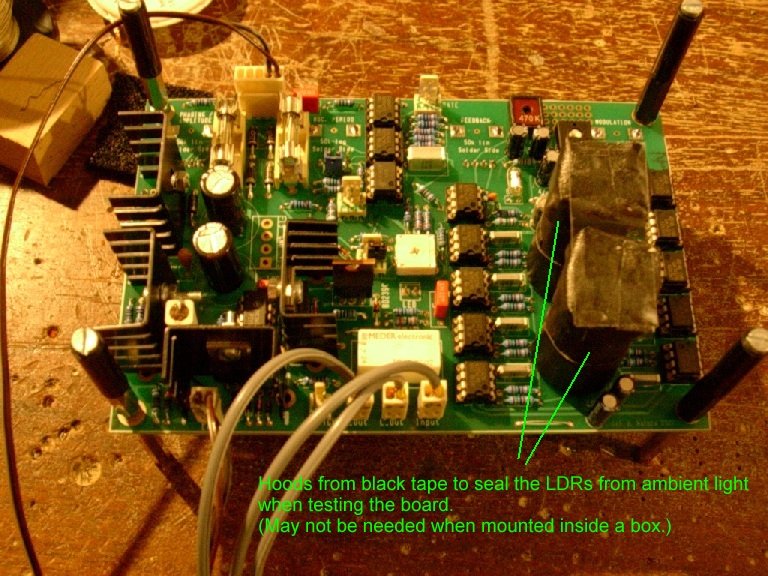 |
 |
 |
 |
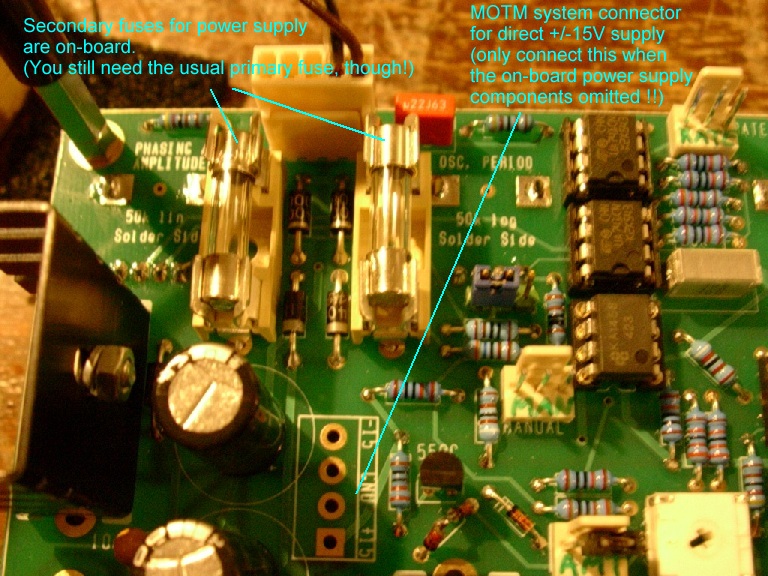 |
 |
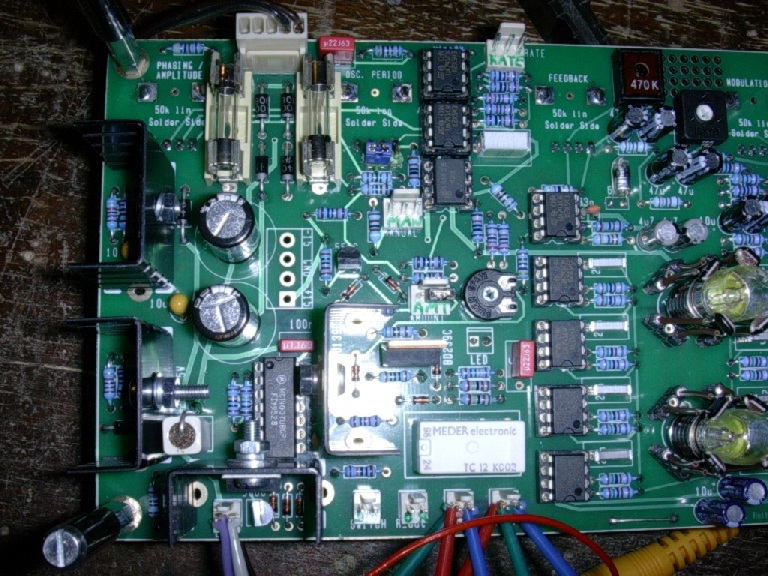 |